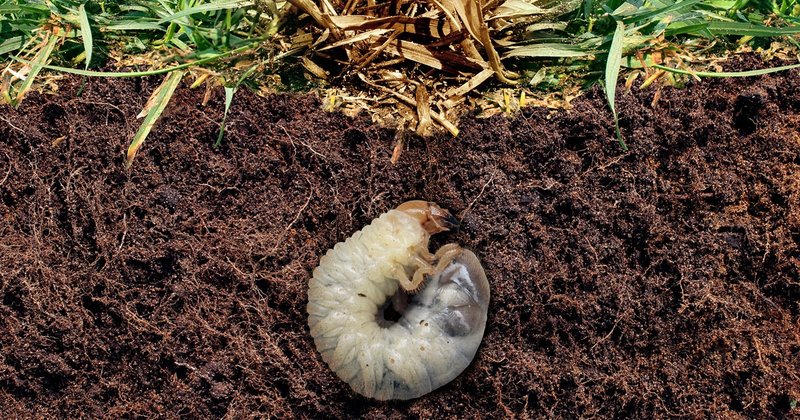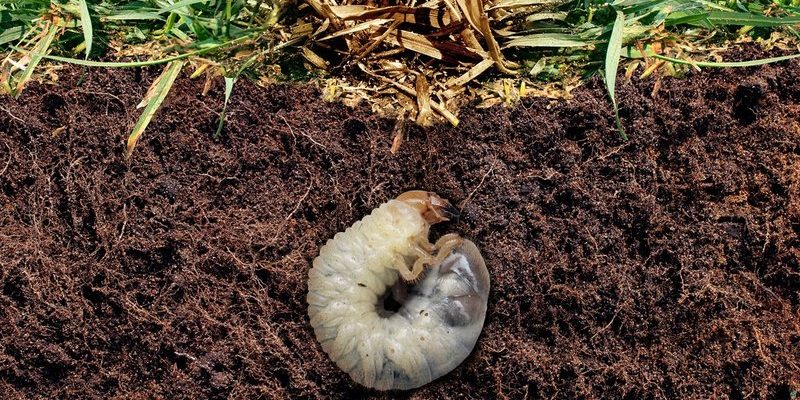
Now, what does “grub control” actually mean? It refers to using specific treatments to manage grub populations—those pesky larvae that munch on your grass roots. Think of it like applying a protective shield around your lawn so that it stays healthy. In this guide, we’ll walk through the best times to apply these treatments and how to recognize when your lawn might need a little extra help.
Understanding Grubs and Their Impact on Your Lawn
Grubs are the larvae of beetles, such as Japanese beetles and European chafers. They tend to feast on grass roots, and when their numbers grow, they can wreak havoc on your lawn. If you’ve ever noticed brown patches or soggy spots in your yard, those might be signs of grub activity. Basically, grubs are like uninvited guests at a party—they take more than they give.
Knowing your enemy is half the battle. Let’s dive into the most common types of grubs, how they damage your lawn, and why controlling them is essential for the health of your grass.
– **Japanese Beetles**: These are probably the most notorious grubs. They can completely destroy your lawn if not addressed promptly.
– **European Chafers**: Also harmful, they live below the soil and munch on roots, leading to dead patches you can’t ignore.
– **Billbugs**: Though not technically grubs, their larvae can cause similar damage and deserve a spot in the discussion.
Understanding how these grubs affect your turf will help you realize why timing your treatments is crucial for success.
When Should You Apply Grub Control Treatments?
Timing is everything when it comes to grub control. If you apply treatment too early or too late, you may not get the results you want. Generally, the best time to apply grub control treatments is late spring to early summer, when grubs hatch into larvae.
During this time, they are close to the surface and actively feeding, making them more vulnerable to treatment. Here’s a simple breakdown:
– **Early Spring (April to May)**: During this time, grubs are still in the egg stage. It’s best to wait until they hatch.
– **Late Spring to Early Summer (June)**: This is prime time for treatment. The larvae are feeding, and applying **grub control** now can be effective in managing their population.
– **Fall (August to September)**: Some treatments can be applied as a preventive measure to stop eggs from hatching in the spring.
By keeping track of these stages, you can ensure you’re giving your lawn the best chance at thriving.
Types of Grub Control Treatments
You have a couple of options when it comes to grub control treatments, and knowing them can help you make the right choice for your lawn.
1. **Preventive Treatments**: These are applied before grubs hatch and can be quite effective. They create a barrier to prevent eggs from developing into larvae. Think of it as setting a trap before the mice arrive.
2. **Curative Treatments**: If you already see signs of grub damage, you’ll want to use curative treatments. These work on the larvae that are already present and can help save your lawn from further damage.
Both types of treatments have their pros and cons, so choose what works best for your lawn. Always read the label to ensure you’re using the right product for your needs.
How to Apply Grub Control Treatments Effectively
Simply buying a treatment isn’t enough; you need to apply it correctly for the best results. Here’s a step-by-step guide to making sure you do it right.
1. **Choose the Right Day**: Apply treatment on a dry day when rain isn’t forecasted for at least 24 hours. This allows the product to stay on the ground instead of washing away.
2. **Preparation**: Before applying, mow your lawn and make sure it’s free of debris. This helps the treatment penetrate the soil better.
3. **Follow Instructions**: Read the label carefully for dosage and application methods. Some products require dilution, while others are ready to use.
4. **Watering**: After application, watering the area lightly is often advisable. This helps the treatment reach the grubs beneath the soil. But don’t overdo it!
By following these steps, you’ll improve your chances of success and keep that lawn looking its best.
Recognizing Grub Damage
Before you rush into treatment, it’s important to confirm that grubs are indeed the problem. Recognizing grub damage involves looking for specific signs in your lawn.
– **Brown Patches**: If parts of your lawn are turning brown and staying dry, it could indicate that the roots have been damaged.
– **Soggy Areas**: These may signal that grubs are feasting under the surface, leading to unhealthy grass.
– **Increased Animal Activity**: If you notice animals digging or birds pecking at your lawn, they might be after the grubs.
If you spot any of these signs, it’s time to take action. Early detection makes a big difference.
Natural Alternatives to Chemical Treatments
If you prefer a more eco-friendly approach, there are natural alternatives to chemical grub control options. These methods may take a bit longer, but they can be effective.
– **Beneficial Nematodes**: These microscopic worms target grubs and can reduce their population without harming your lawn. You can apply them as you would a fertilizer.
– **Milky Spore**: This is a powder that contains a bacterium, which specifically targets Japanese beetle grubs. It’s a great long-term solution.
– **Diatomaceous Earth**: Sprinkling this natural powder can help kill grubs by causing damage to their exoskeletons.
Using natural methods requires patience but can yield a healthy lawn while being kinder to the environment.
Aftercare: Keeping Your Lawn Healthy
Once you’ve applied grub control, it’s essential to follow up with care. Here’s what to keep in mind:
– **Water Regularly**: Keeping your lawn well-watered helps the grass recover and encourages root growth.
– **Monitor for Recurrence**: Keep an eye out for any signs of grub activity. Being proactive can help catch any issues early.
– **Fertilize Wisely**: Applying a balanced fertilizer can help your lawn bounce back and grow strong.
Paying attention to your lawn’s needs after treatment will ensure you’re on the right path to a vibrant, green space.
In closing, applying grub control treatments at the right time is crucial for maintaining a healthy lawn. By understanding your enemy, recognizing the signs, and choosing the right method, you can keep those lawn ninjas at bay. So, go ahead and put these tips into action—your grass will thank you!

